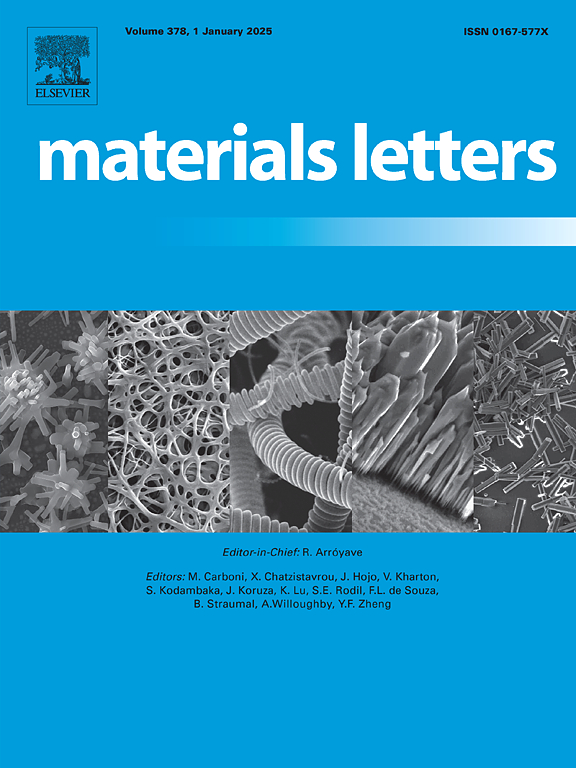Rational hydrogel design to improve brain modulus matching for implantation
IF 2.7
4区 材料科学
Q3 MATERIALS SCIENCE, MULTIDISCIPLINARY
引用次数: 0
Abstract
Treating the brain is challenging due to the restrictive blood–brain barrier, and modulus-mismatched implants often cause problems. Herein, we have fabricated copolymer hydrogels from thermoresponsive polymer, poly(N-isopropylacrylamide) (PNIPAAm), -r-hydrophilic polymer, poly(acrylic acid) (PAA), which are injectable and transform into soft implants above their lower critical solution temperature (LCST). PAA concentration can be leveraged to tune the LCST and viscosity of the PNIPAAm–r–PAA hydrogel in solution. Furthermore, the Young’s moduli of these materials, ranging from 1-4 kPa, are close to rat and human brain tissue, potentially leading to less inflammation and rejection due to significant modulus mismatch.

求助全文
约1分钟内获得全文
求助全文
来源期刊

Materials Letters
工程技术-材料科学:综合
CiteScore
5.60
自引率
3.30%
发文量
1948
审稿时长
50 days
期刊介绍:
Materials Letters has an open access mirror journal Materials Letters: X, sharing the same aims and scope, editorial team, submission system and rigorous peer review.
Materials Letters is dedicated to publishing novel, cutting edge reports of broad interest to the materials community. The journal provides a forum for materials scientists and engineers, physicists, and chemists to rapidly communicate on the most important topics in the field of materials.
Contributions include, but are not limited to, a variety of topics such as:
• Materials - Metals and alloys, amorphous solids, ceramics, composites, polymers, semiconductors
• Applications - Structural, opto-electronic, magnetic, medical, MEMS, sensors, smart
• Characterization - Analytical, microscopy, scanning probes, nanoscopic, optical, electrical, magnetic, acoustic, spectroscopic, diffraction
• Novel Materials - Micro and nanostructures (nanowires, nanotubes, nanoparticles), nanocomposites, thin films, superlattices, quantum dots.
• Processing - Crystal growth, thin film processing, sol-gel processing, mechanical processing, assembly, nanocrystalline processing.
• Properties - Mechanical, magnetic, optical, electrical, ferroelectric, thermal, interfacial, transport, thermodynamic
• Synthesis - Quenching, solid state, solidification, solution synthesis, vapor deposition, high pressure, explosive
 求助内容:
求助内容: 应助结果提醒方式:
应助结果提醒方式:


